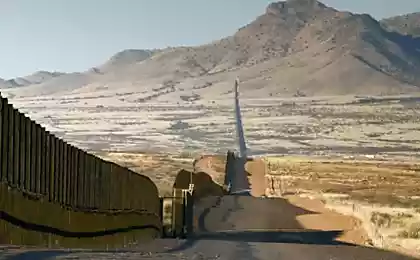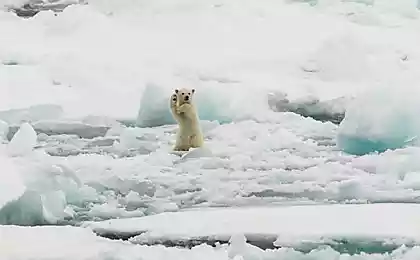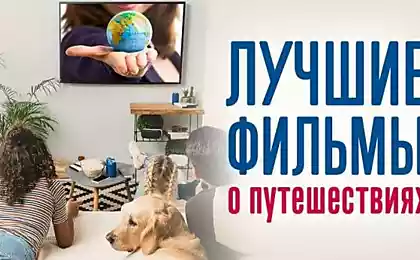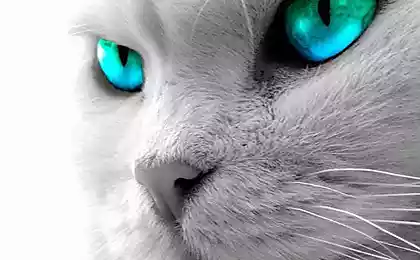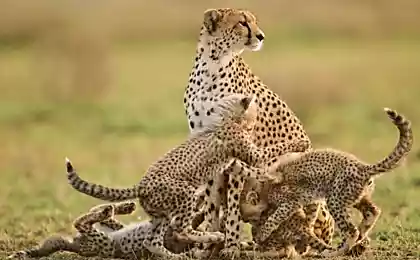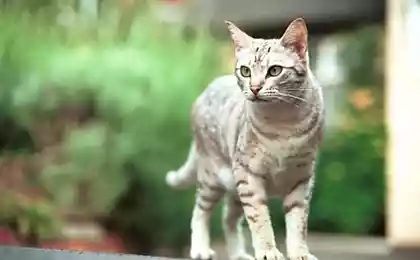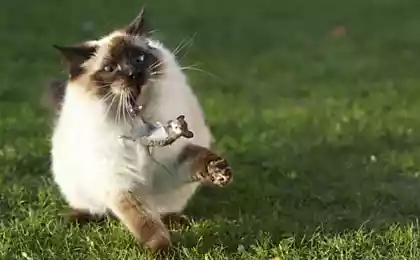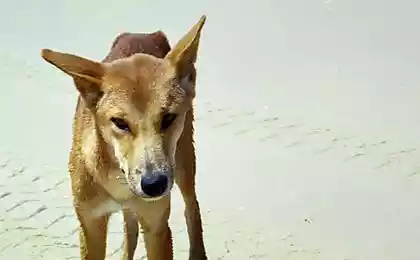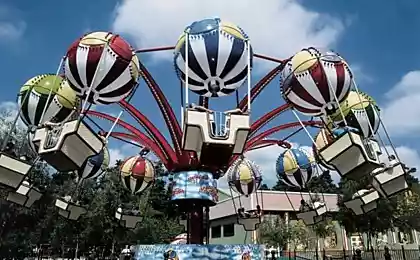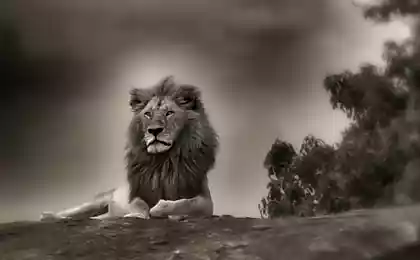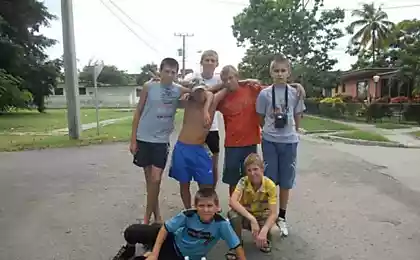1059
wild nature
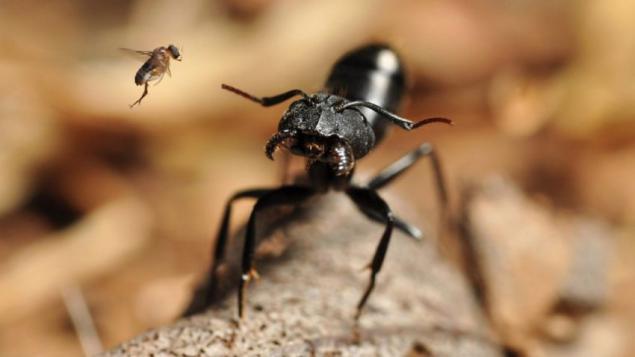
Many photographers make great pictures of the animal world, but few of them know exactly what is actually happening in front of the camera - if the photographer will not appear at the same time a research scientist.
Environmental photo contest held by the British publishing company BioMedCenter «BMC Ecology Image Competition» aims to show not only the beauty of nature, but also a fascinating work of researchers to help us understand it.
Recently it was announced the winners of 2014, whose amazing photos we present to our readers.
Let's start with work marked incentive prizes.
These eastern swallowtail so often gather on the banks of the rivers in the eastern part of the US to resupply the necessary minerals (author - JP Lawrence)

Justin Heyverd photographed by researchers Stephanie Irwin and Kylie Seyts collecting samples on the shore of an isolated natural pond. It has its own name - Skippy pond and a unique coastal ecosystem, situated in a nature reserve «Ahihi-Kina'u» on the island of South Maui, Hawaii

These monkey gelada make incredible leaps to save his life at the slightest change of light is indicative of the threat of a predator (the photographer - George Ryan. Burke)
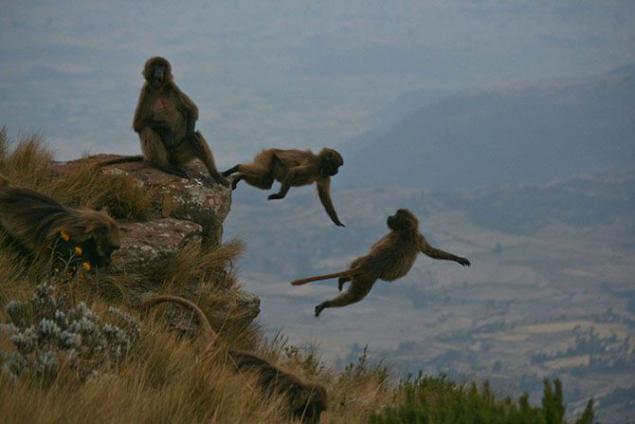
This year-old baby chimpanzee is still very small, and feeds mainly on mother's milk, but here he is trying, perhaps, the first fruits, which treats of the mother in a cozy refuge, hidden in the branches of a tree on vosmidesyatimetrovoy height. Photographed by Alan Hawley in Uganda
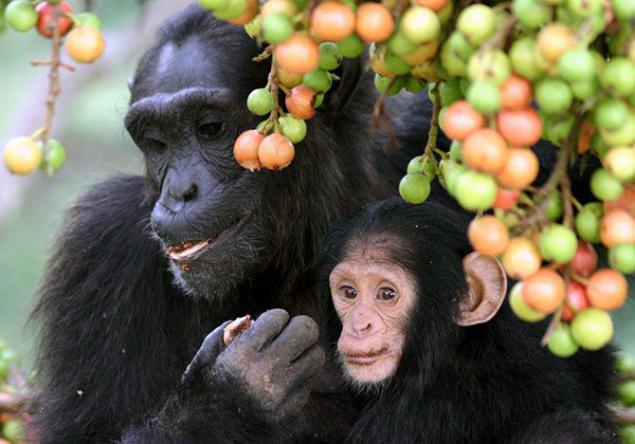
This male Chilean burrowing wasp took time defenseless females carrying their prey to the nest to carry out the procedure of mating (the work of Bernardo Segyura)
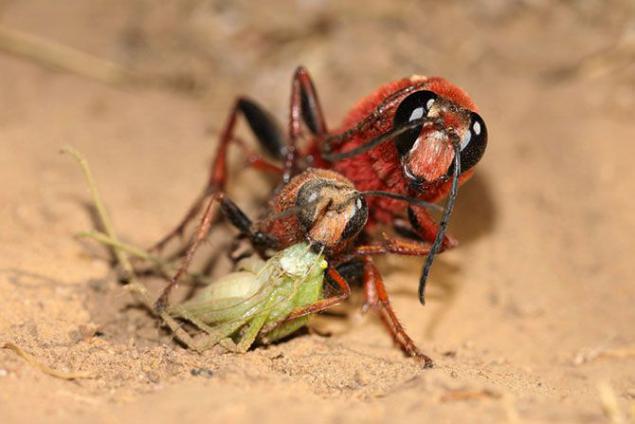
Gardeners find these tiny insects, sucking leaf juice, dangerous pests. However, they in turn are food for many creatures, that is just an extension of the food chain. Author - Suvik Mandal, a researcher from the Institute of Natural Sciences in India
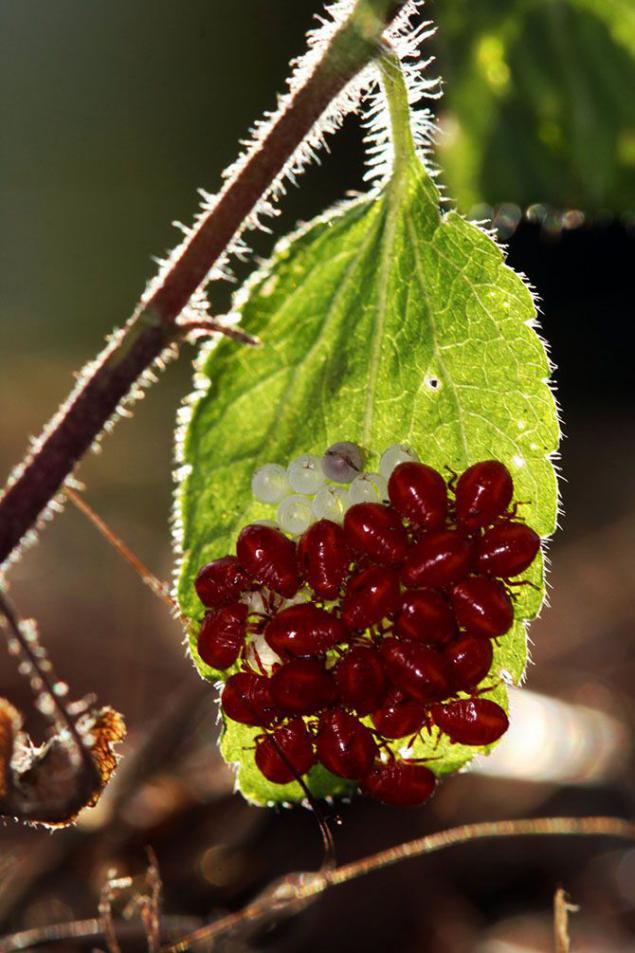
Photographer Sayantan Das researcher explains that this Young Ceylon Lori "parked" in its branch in the Eastern Ghats (a mountain range in India), waiting for his mother to catch insects for lunch
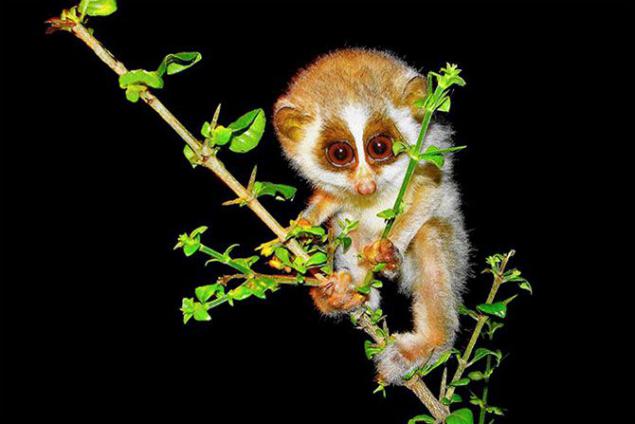
Chicks spotted owl is rarely shown outside in daylight, says Suvik Mandal. Recently, this type of habitat has decreased greatly due to the development of industry in South Asia
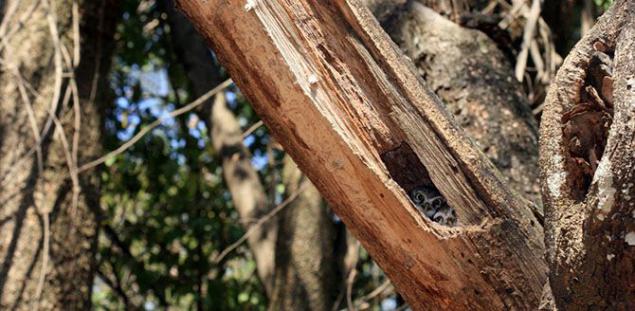
This Arctic hare grows a white pelt, preparing for the long winter, Greenland, says Daniel Carstensen
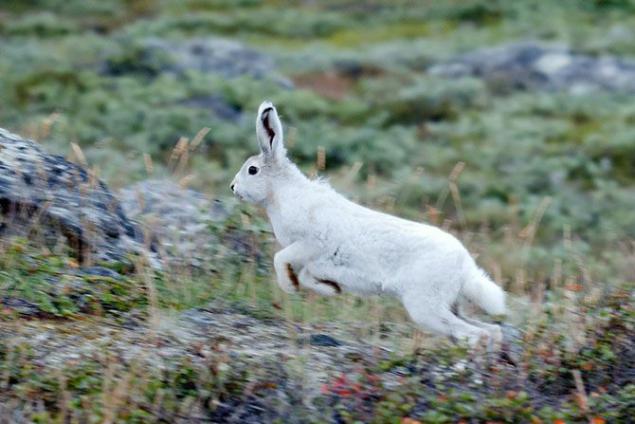
Photographer R. Anandbabu made pictures of garden lizards that settled across Asia. They eat everything smaller than their own size, including other lizards
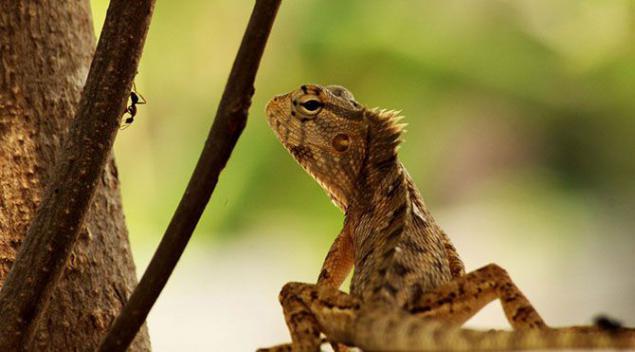
These small freshwater crustaceans are attacked even more tiny parasites, says the author of a photo Nina Shlotts
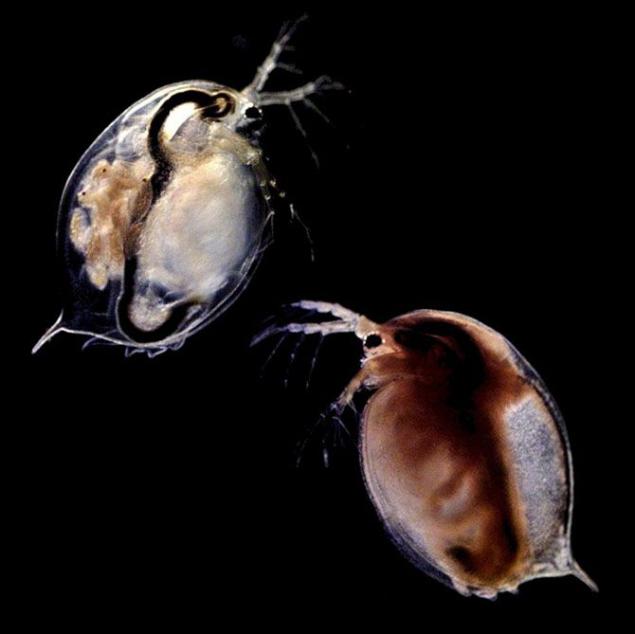
Shannon Graham argues that although this battle between the two hippos in Kenya pond looks like a territorial dispute is likely to "contain aggression" shows that here is purely intimate and it comes to pairing
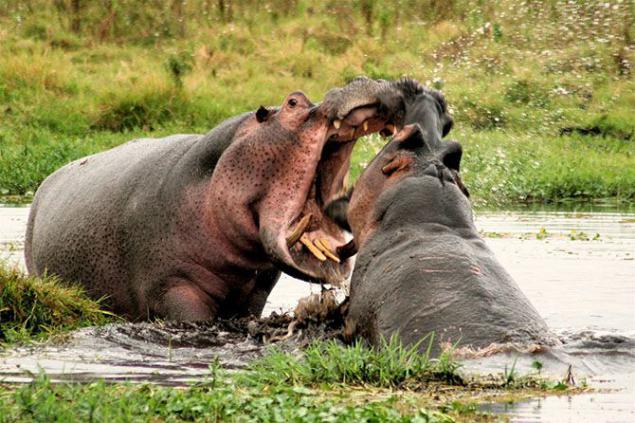
Paresh Poriyya made this photograph during his research for the dissertation on biological structures tidal zones. Barnacles and coral polyps zoantarii - colonial cnidarians, coral related - are fighting for territory
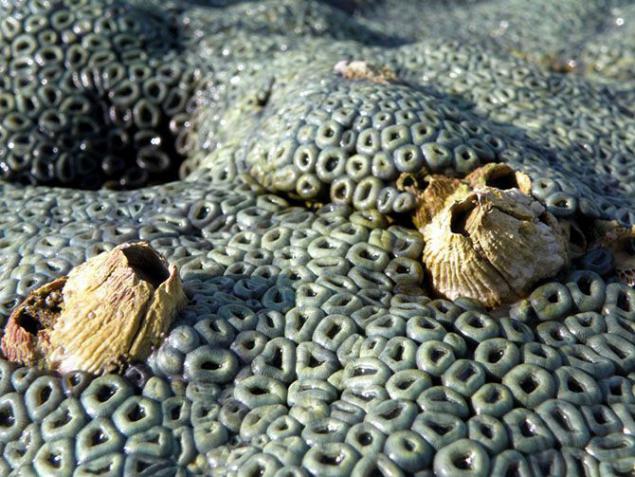
A herd of wild wildebeest grazing in the meadows of the savannah in Amboseli National Park in Kenya - is in turn food for lions, says Graham Shannon
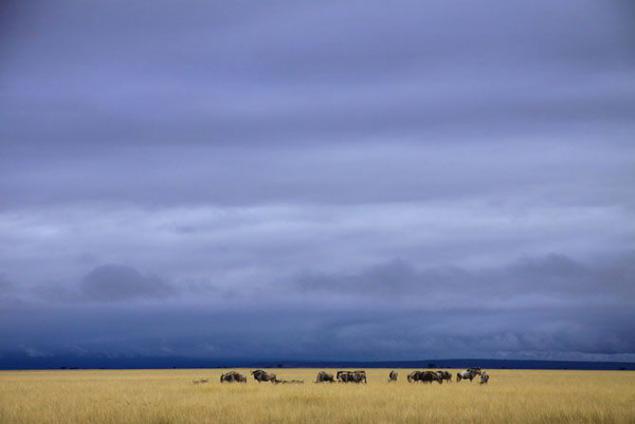
The same author made this picture lion and lioness tearing half the adult antelope impala carcass in Pilpnesbergskom National Park in South Africa
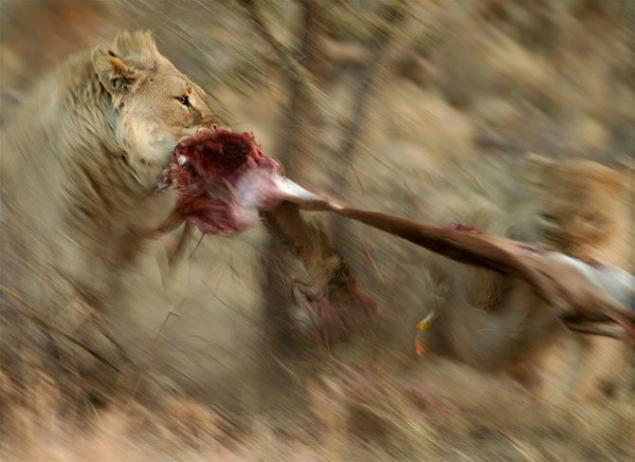
Laetitia Campioni looking black-browed albatross nest on New Island, one of the Falkland sharply
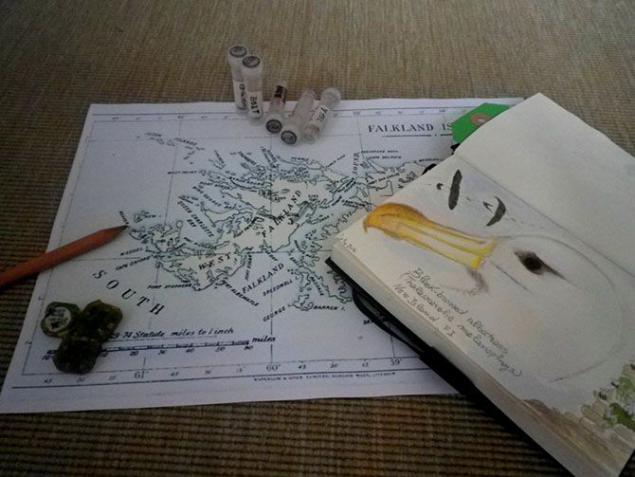
Benjamin P. Lee said that scientists need to examine the populations of bats more intensively to understand the mechanism of spread of infectious diseases from animals to humans. This scientist pictured short-nosed fruit bat Malay releases after inspection

Paresh Poria shows how people in Western India traditionally earn their food in the coastal area during the summer season and premonsoon
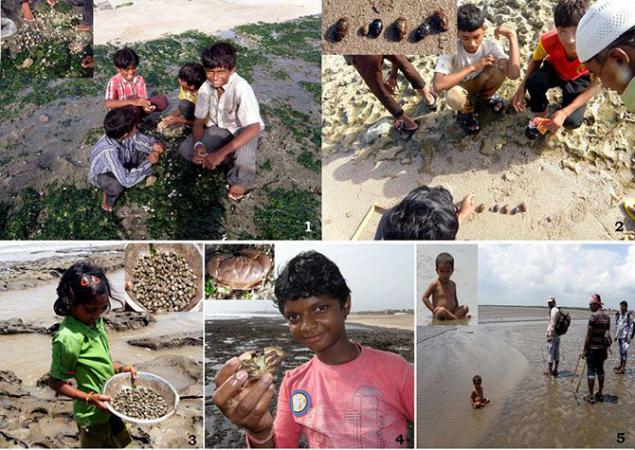
The growing human population and industrial development lead to the fact that some living beings have to look for ways of coexistence with people, explains Nagendra Ray - and this process is not always easy to pass
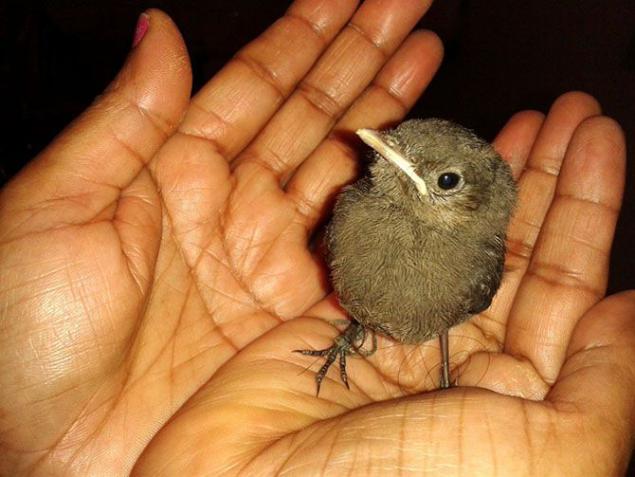
Nitsshke Matthew says that the army of crabs soldiers helps researchers analyze the condition of coastal waters. They absorb dirt containing heavy metals in tidal zones and mangroves that can detect contamination in the tissues of these animals before they can be locked in water samples
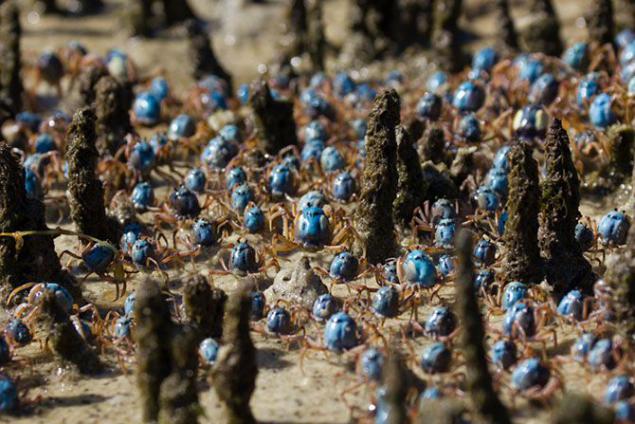
Grown petrel chicks lose their orientation within the city of lights, says Airam Rodriguez. This Mediterranean shearwater lost because of them during the flight from Tenerife in the Canary Islands
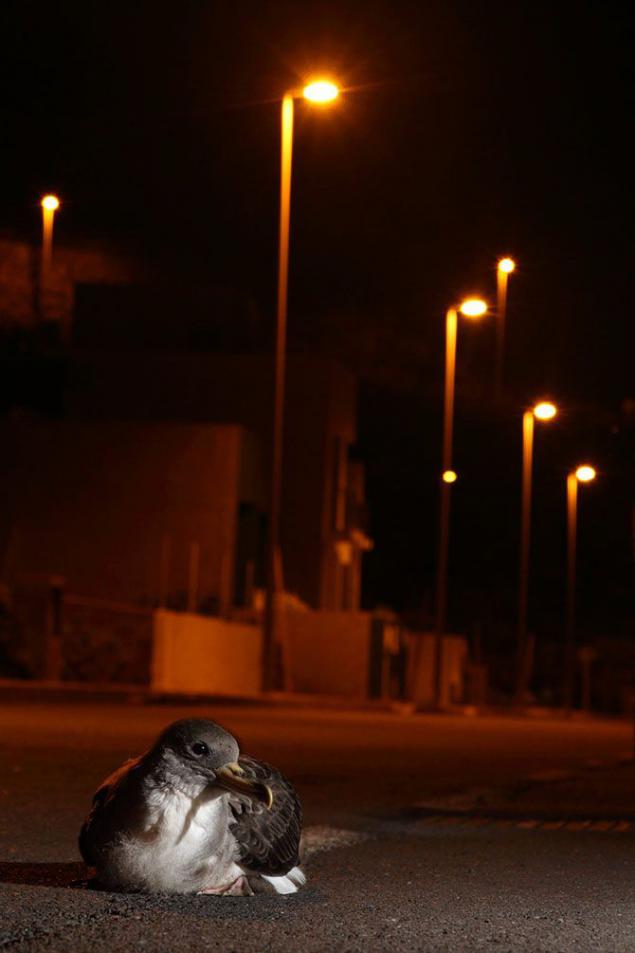
Benjamin P. Lee took this picture at the crossing for animals, connecting the two nature reserves in Singapore, among which eight-paved freeway
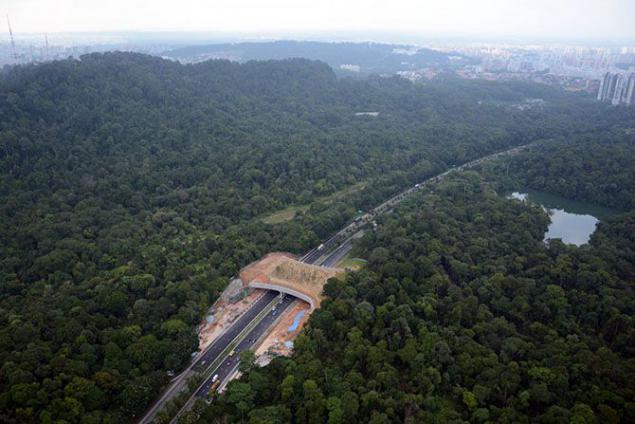
And now - the winners of the contest:
Section theoretical ecology journal BMC Ecology said Kyle Harrington premium collage illustrating characteristics of predators and their victims masking
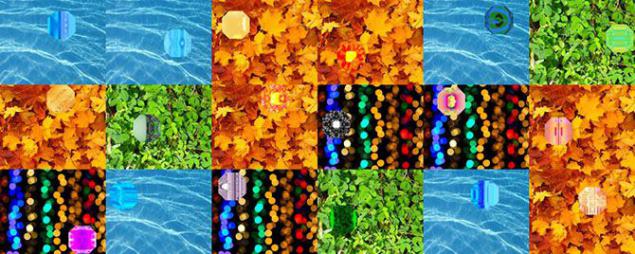
The winner in the category of landscape ecology and ecological systems - photo Benjamin Blonder, which shows the rare plants that can survive in Death Valley
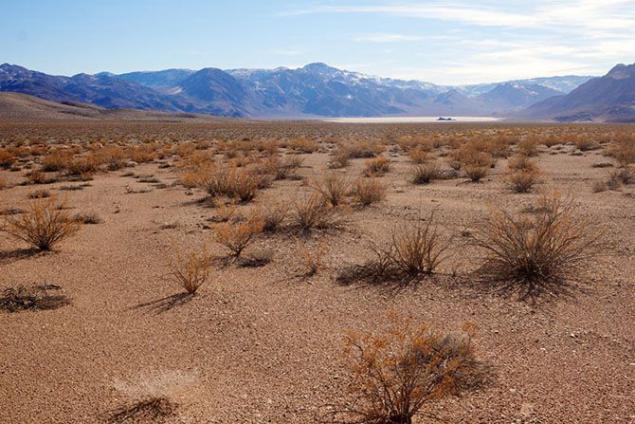
In the picture, the declared winner in the conservation of biological diversity, depicts the natural park of the Philippines Tubbataha located in the heart of the Coral Triangle. Keyterin Kim made this photograph of young corals stretching to the sun, as the young trees in the jungle
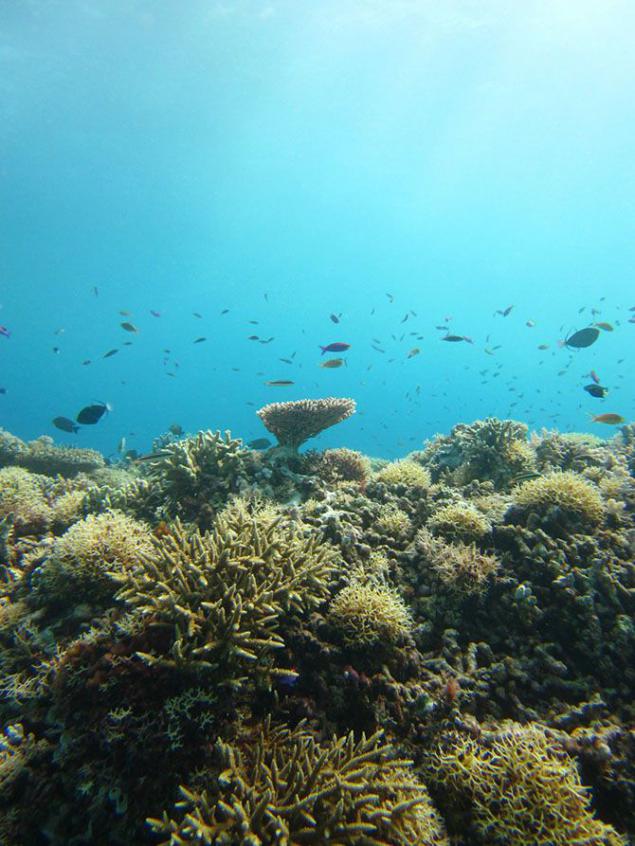
Crab spider (another name - spider crab) attacks the bee on the petals of a flower, while the butterfly collecting nectar - this is the story pictures, winning in the category of populations and makroekologii. Andrew J.. Crawford photographed this dramatic scene in eastern Panama
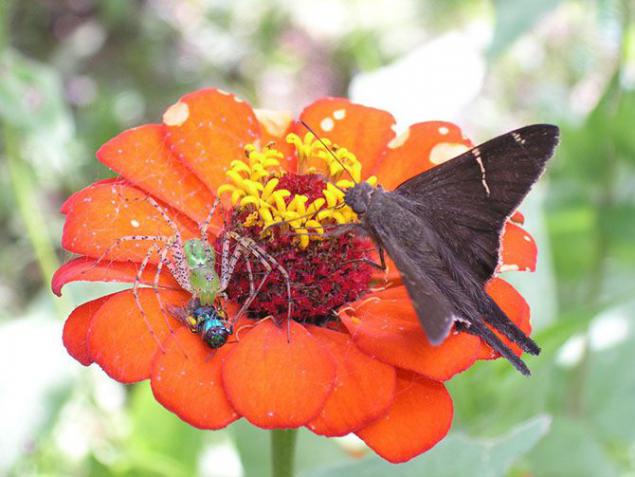
Bernardo Segyura is the author of the image, the Award in the category of animal behavior and biopsychologist. It's hard to believe, but the picture bee attacked tiny fly parasite, and not vice versa

Special admiration aroused this photo Leticia Kernalegen, where thousands of chicks huddled together in a king penguin dense crowd, trying to keep warm in the icy wilderness of Antarctica, while the adult members of the colony gather food, maybe a few hundred kilometers away
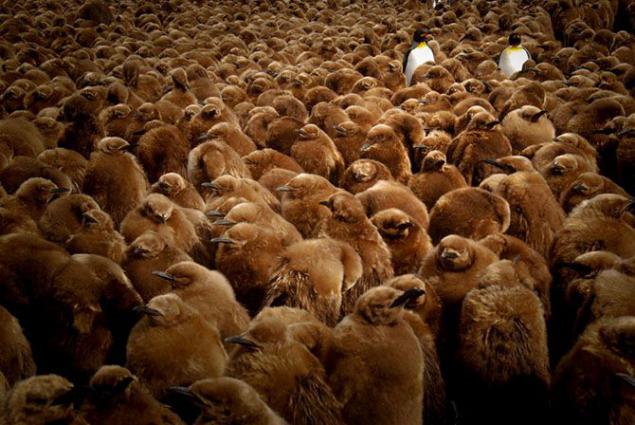
In second place among the absolute winners - photo Laetitia Campioni, a portrait of black-browed albatrosses with chicks made the Falklands

Finally, the Grand Prix went to a tiny rocky hamster Namakua photographed Petra Wester. The picture was taken when the animal collects nectar from a lily-pagoda in South Africa, while covered with a layer of pollen, which then transfers it to the neighboring flowers
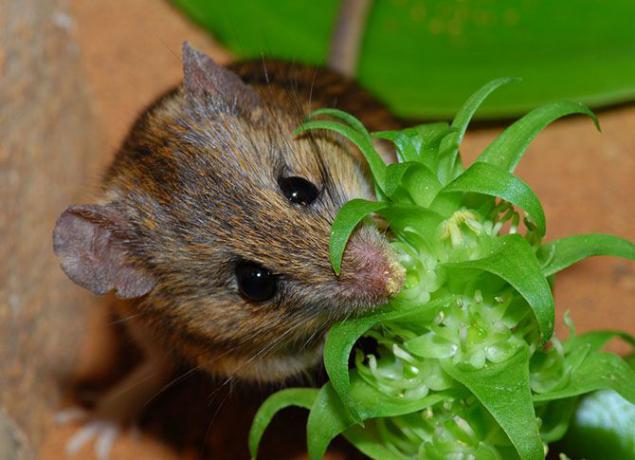
Source: grimnir74.livejournal.com
